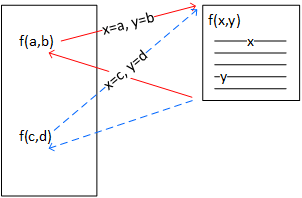
Functions and methods are a fundamental part of all major programming languages that help reduce the size of programs by eliminating redundant code. The C++ compiler translates a function body into machine instructions, stores the instructions at a specific address in memory, and saves the address in its symbol table. The compiler translates each function call into a "jump" to the function's address. The compiler also generates code to copy the function call's arguments to the compiled function's parameters. This process allows programmers to reuse a function's code, with whatever data they choose, whenever its operations are needed.
These advantages notwithstanding, the most valuable thing that functions do is help software engineers to organize a program into conceptual units. They allow engineers to think about a problem solution at a high level - they can focus on what the function does rather than how it does it. Separating "what" from "how" helps engineers manage the complexity of a program.
Furthermore, everything that we learn in the current chapter will carry over into the member functions that are a part of object-oriented programming.